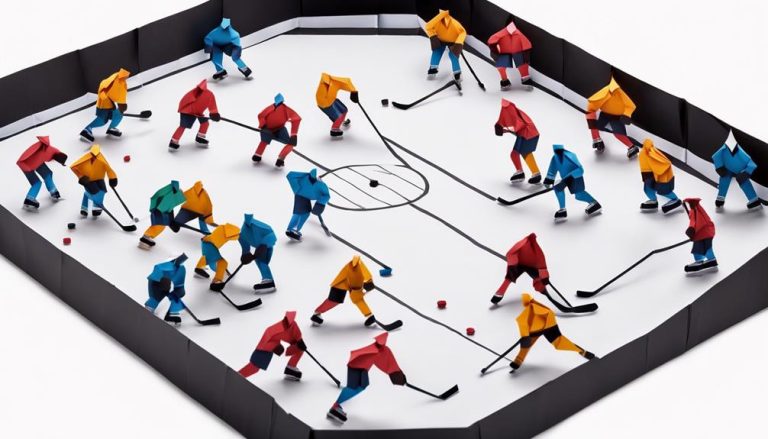General Rules of Platform Tennis
As you step onto the platform tennis court, think of the rules as the guiding rails that keep the game on track. Understanding the ins and outs of this unique sport can elevate your gameplay and guarantee fair play. From the court dimensions to the equipment regulations, each aspect plays a pivotal role in the game. So, prepare yourself to navigate through the intricacies of platform tennis rules, and discover how they shape the dynamic nature of this fast-paced sport.
Court Dimensions
When playing platform tennis, understanding the court dimensions is important for positioning and strategizing effectively. The net height in platform tennis is 34 inches at the sides and 36 inches in the middle, giving a unique challenge compared to other racket sports. This lower net height encourages players to utilize different strategies, such as drop shots and lobs, to outmaneuver their opponents.
Additionally, the court surface in platform tennis is specifically designed to allow for proper ball bounce and player movement. The court is surrounded by a screen that lets the ball play off the walls, adding an element of unpredictability and excitement to the game. The court itself is 44 feet long and 20 feet wide, providing ample space for quick movements and dynamic plays.
Understanding these dimensions and features of the platform tennis court is important for developing a winning game plan. By recognizing the net height variations and utilizing the court surface to your advantage, you can strategically position yourself to control the game and outsmart your opponents. So, next time you step onto the platform tennis court, keep these dimensions in mind and use them to elevate your gameplay to new heights.
Scoring System
When playing platform tennis, understanding the point system is crucial for scoring. Points are awarded based on where the ball lands and the specific rules of the game. Deuce and ad scoring, along with tiebreak rules, add strategic importance to the scoring system, making each point matter in your quest for victory.
Point System Explanation
Explaining the point system in platform tennis can provide a clearer understanding of how scoring works in this unique sport. Here are three key aspects to contemplate:
- Scoring: In platform tennis, points are awarded similarly as in tennis, where a game consists of points (15, 30, 40) and players must win by two points. However, instead of traditional scoring, platform tennis uses no-ad scoring, meaning the first team to win four points wins the game.
- Deuce and Ad Scoring: Unlike tennis, where deuce occurs at 40-40, in platform tennis, deuce happens at 3-3, and the receiving team gets to choose which side to receive the serve from.
- Strategies and Tactics: Due to the smaller court size and the wires, players often use quick volleys and strategic placement to outmaneuver opponents. Understanding these nuances can give you a competitive edge in platform tennis.
Deuce and Ad Scoring
Understanding the unique deuce and ad scoring system in platform tennis adds an intriguing layer to the game's strategic dynamics. In platform tennis, when the game reaches a score of 40-40 (deuce), the next point decides the game. This is where the ad scoring system comes into play. The serving team gets to choose which side to serve from. If they win the point, they move to the advantage court (ad) for the next point. If they lose, the game goes back to deuce. This system requires players to strategize not only their shots but also their player positioning on the court to gain an advantage. Below is a table summarizing the deuce and ad scoring system:
| Scoring Situation | Description |
|---|---|
| Deuce | Score tied at 40-40, next point wins the game |
| Advantage (Ad) | Winning point after deuce, gives the serving team advantage |
Tiebreak Rules
The tiebreak rules in platform tennis present a dynamic and strategic scoring system that adds intensity to the game. Here are some key points to ponder:
- Tiebreak strategies: In a tiebreak, every point becomes vital. Focus on consistency, smart shot selection, and maintaining a positive mindset to gain an edge over your opponents.
- Scoring: In a tiebreak, the first team to achieve 7 points with a margin of at least 2 points wins the set. This format keeps the competition fierce and the players on their toes until the last point.
- Tiebreak etiquette, sportsmanship: Remember to show respect towards your opponents during a tiebreak. Stay gracious in both victory and defeat, and uphold the spirit of sportsmanship throughout the intense moments of a tiebreak.
Serving Rules
Wondering how to serve correctly in platform tennis? Serving is an important aspect of the game, and understanding the rules can give you a competitive edge. In platform tennis, the serve must be hit underhand, unlike in tennis. This underhand serve is a unique feature of the sport, requiring players to use a paddle to deliver the ball over the net and into the service court diagonally opposite.
One important rule to keep in mind is the fault fault rule. In platform tennis, if a serve hits the net and then lands outside the service court boundaries, it is considered a fault fault. This means that the server loses the point, and the serve goes to the other team. It's crucial to practice your underhand serve to minimize the chances of committing a fault fault and giving away easy points to your opponents.
When serving, make sure to stand behind the baseline and within the imaginary extensions of the singles sidelines. This position ensures that your serve is legal and gives you the best chance of starting the point off on the right foot. By mastering the underhand serve and understanding the fault fault rule, you can elevate your platform tennis game and enjoy a more competitive playing experience.
Let and Out Rules
Let's talk about the points system in platform tennis. Understanding the let rule and out rule is important for fair play and accurate scoring during matches. Stay tuned as we break down these rules and their impact on your gameplay.
Let Rule Explanation
Exploring the Let Rule in platform tennis can clarify instances where a point may need to be replayed. Understanding the Let rule examples and scenarios can aid in making quick and fair decisions during a match.
Here are three key points to grasp about the Let Rule:
- Interference: If a player is obstructed from hitting the ball due to interference from another player or an outside element, a Let can be called.
- Ball Hits Net: When a served ball hits the net and goes in the correct service court, a Let is usually played.
- Agreed Upon: In some cases, players may mutually agree to replay a point, even if the Let rule technically doesn't apply.
Out Rule Clarification
When determining the Out Rule in platform tennis, it's important to understand how it interacts with the Let Rule for a thorough grasp of the game's regulations. In platform tennis, a ball that lands on or outside the court lines is considered out. Line calls can sometimes be challenging due to the speed of the game, but players should aim for fair play and sportsmanship when making these calls. If there is uncertainty about a line call, players have the option to make an overrule challenge, where a decision can be revisited. This rule guarantees that the game maintains integrity and fairness, allowing players to address any potential discrepancies in line calls that may arise during a match.
Player Conduct
Maintaining proper player conduct is essential in platform tennis to guarantee a fair and respectful environment for all participants. Sportsmanship and etiquette play a critical role in shaping the overall experience on the court. Here are three key points to keep in mind regarding player conduct:
- Respect for Opponents: Always treat your opponents with respect, regardless of the game's outcome. Shake hands before and after the match, and avoid any behavior that could be interpreted as disrespectful or unsportsmanlike. Remember, platform tennis is not just about winning; it's also about fostering a sense of camaraderie and mutual respect among players.
- Control Emotions: While it's natural to feel frustrated or disappointed during a match, it's important to control your emotions and avoid outbursts of anger or frustration. Maintain a positive attitude, focus on your game, and try to handle challenging situations with grace and composure. By staying composed, you not only uphold the spirit of sportsmanship but also set a good example for others.
- Adherence to Rules: Follow the rules of platform tennis diligently and abide by the decisions of the officials. Cheating or attempting to gain an unfair advantage goes against the principles of fair play and undermines the integrity of the game. Remember that true sportsmanship involves playing by the rules and accepting both victories and defeats graciously.
Equipment Regulations
To guarantee fair play and uphold the integrity of the game, understanding the equipment regulations in platform tennis is paramount. When it comes to equipment maintenance and safety, players must make sure that their paddles are in good condition, free of any cracks or damage that could affect the game. Regularly inspect your paddle for wear and tear to prevent any unforeseen issues during matches.
Proper attire is not only about style but also about safety and performance on the court. Make sure to wear comfortable clothing that allows for easy movement and flexibility. Additionally, proper shoe requirements are essential in platform tennis. Opt for non-marking rubber-soled shoes to protect the court surface and provide you with the necessary grip to move swiftly and avoid any slips or falls.
Frequently Asked Questions
Can Platform Tennis Be Played on Any Type of Court Surface?
You can't just play platform tennis on any court surface because it requires specific conditions for ideal play. Plus, remember those footwear restrictions; they're there for a reason to keep the game safe and enjoyable.
Are There Any Restrictions on the Type of Footwear That Can Be Worn While Playing Platform Tennis?
When playing platform tennis, the right footwear options matter. Performance over style is key. Good shoe grip is essential for traction on the court. Make sure your shoes support your game!
Can Players Use Two Hands to Hit the Ball During a Match?
You're wondering if players can use two hands to hit the ball during a match. Using two hands may offer strategic advantages, especially in certain grip techniques. It's a unique approach that can surprise your opponents.
Is There a Specific Age Requirement to Participate in Platform Tennis Tournaments?
You don't need to worry about an age requirement for platform tennis tournaments. People of all ages are welcome to participate and enjoy the game. It's a great opportunity to showcase your skills!
Are There Any Specific Rules Regarding the Use of Protective Eyewear During Matches?
When playing, prioritize your safety with eyewear. Equipment regulations mandate the use of protective eyewear during matches to prevent injuries. Stay focused and protected on the court while enjoying the game.






